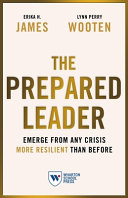

Emotional intelligence (EI) is a cornerstone of effective leadership. The book emphasizes that leaders must develop a deep understanding of their own emotions as well as the emotions of their team members. This involves self-awareness, self-regulation, motivation, empathy, and social skills. Leaders with high EI can navigate complex interpersonal dynamics, foster trust, and create an inclusive environment where everyone feels valued. By recognizing emotional cues and responding appropriately, leaders can enhance team cohesion and drive performance. The book provides practical strategies for enhancing EI, including mindfulness practices and active listening techniques, enabling leaders to connect with their teams on a deeper level.
Continue readingIn an ever-changing business landscape, adaptability is crucial for leaders. The book discusses the importance of being flexible in the face of uncertainty and change. Leaders must cultivate resilience not just in themselves but also in their teams. This involves encouraging a growth mindset, where challenges are viewed as opportunities for learning and development. The author shares stories of leaders who successfully navigated crises by remaining adaptable and resilient, illustrating the importance of maintaining a positive outlook and fostering a culture that embraces change. Practical tips for building resilience include stress management techniques and creating a supportive work environment that encourages innovation.
Continue readingA compelling vision is essential for effective leadership. The book highlights how leaders must articulate a clear and inspiring vision that aligns with their organization's goals. Strategic thinking involves the ability to foresee potential challenges and opportunities, allowing leaders to make informed decisions. The author emphasizes the need for leaders to engage their teams in the vision-setting process, fostering a sense of ownership and commitment. By using frameworks for strategic planning and scenario analysis, leaders can better anticipate market shifts and prepare their organizations for the future. The book also discusses the importance of communication in conveying the vision and inspiring others to work towards it.
Continue readingThe book delves into the dynamics of team building and the qualities that characterize high-performing teams. Leaders play a crucial role in assembling diverse teams, establishing clear roles, and promoting collaboration. The author emphasizes the importance of trust and psychological safety within teams, allowing members to express their ideas and concerns without fear of judgment. Strategies for building high-performing teams include setting clear objectives, encouraging open communication, and recognizing individual contributions. The book also discusses the significance of conflict resolution and how healthy disagreements can lead to better decision-making and innovation. By fostering a collaborative culture, leaders can unlock the full potential of their teams.
Continue readingCommunication is a vital skill for any leader, and the book underscores the importance of clarity, transparency, and active listening. Leaders must convey their messages effectively to ensure alignment and understanding among team members. The author provides insights into various communication styles and how to adapt them based on the audience. Additionally, the book addresses the significance of non-verbal communication and the impact it has on team dynamics. By developing strong communication skills, leaders can build trust, resolve conflicts, and motivate their teams. Practical exercises and tips for enhancing communication skills are included, making it easier for leaders to apply these concepts in real-world scenarios.
Continue readingThe ability to make sound decisions is a hallmark of effective leadership. The book discusses various decision-making frameworks and techniques that leaders can employ to navigate complex situations. The author emphasizes the importance of data-driven decision-making, encouraging leaders to leverage analytics and insights to inform their choices. Additionally, the book addresses the role of intuition and experience in decision-making, highlighting the balance between analytical thinking and gut feelings. Problem-solving is also explored, with strategies for identifying root causes and developing actionable solutions. By honing their decision-making skills, leaders can drive their organizations forward and tackle challenges with confidence.
Continue readingThe book concludes with a discussion on the importance of ethical leadership and social responsibility. Leaders are not only responsible for their organizations but also for their impact on society and the environment. The author emphasizes the need for leaders to act with integrity, transparency, and accountability. By fostering a culture of ethics within their organizations, leaders can inspire their teams to uphold similar values. The book also explores the concept of corporate social responsibility (CSR) and how organizations can contribute positively to their communities. Practical examples of ethical leadership in action are provided, encouraging leaders to reflect on their values and the legacy they wish to leave behind.
Continue reading